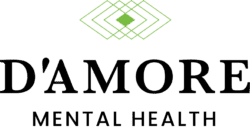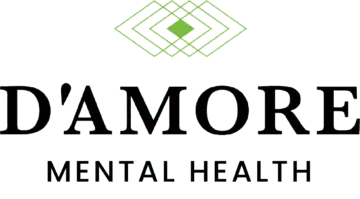Did you know there are multiple types of depressive disorders?
For some people who experience chronic feelings of hopelessness or inability to enjoy good news in their lives, their depression manifests as something called dysthymia.
So what is dysthymia? It’s a word you might’ve never heard before, but you likely know people who have it. And if you think it might describe you, keep reading.
We’ll walk you through the signs and symptoms of dysthymia and how people manage it in their lives.
What Is Dysthymia (AKA Persistent Depressive Disorder)?
Dysthymia is a long-term depressive disorder. Because of this, many people who have it don’t realize they have a disorder until they get diagnosed. Before the diagnosis, they might attribute their low mood to a personality trait or not realize that they could feel a different way.
Another name for this is persistent depressive disorder, which might give you an idea as to what it feels like. Part of the definition of dysthymia is that it lasts for at least two years with only short periods of relief, if any. But a mental health professional can still recognize signs of dysthymia even if you started experiencing symptoms less than two years ago.
Symptoms of Dysthymia
If you or someone you know has had a low mood for years, dysthymia might be the reason why. You should seek out professional help to get an official diagnosis. But if you’re in the early stages of looking for clues, here are some signs that someone might be experiencing dysthymia:
- A change in eating (whether it’s an increase or decrease)
- A change in sleeping
- Low energy or fatigue
- Low self-esteem
- Trouble focusing or difficulty in decision-making
- Hopelessness
These signs are from the 5th edition of the American Psychiatric Association’s Diagnostic and Statistical Manual of Mental Health Disorders, more commonly known as the DSM-5. Recognizing these signs is part of the diagnostic process.
In other words, the presence of multiple of these signs is part of how mental health professionals determine whether someone has dysthymia.
Dysthymia Causes
Like other mental disorders, there are a few different ways to look at the reasons someone might have dysthymia.
First, there’s the brain chemistry perspective. Some people chalk it up to imbalances in neurotransmitters in the brain.
Then there’s the possibility of an event that set off the start of the depression. For example, someone might start having symptoms in response to the loss of a family member. Sometimes people can trace their depression back to a childhood event, even if they only recognize it years later.
And finally, there’s the genetic predisposition framework. If a parent or someone else in your family has dysthymia, you may be at greater risk for it yourself.
If you’ve been diagnosed with dysthymia, it might not be clear which of these causes apply to you. It might even be a mix of all of them. What’s important to know is that dysthymia is treatable—with the right help, you can manage your symptoms and stay in control.
Treatment for Dysthymia
If you think you might have dysthymia, the first place to go might be the therapist’s office. A therapist can help determine whether you do indeed have dysthymia (which can be tricky, as symptoms are similar to other depressive disorders). And from there, they can help you make a treatment plan.
Medication is one of your options, but it’s not the only one. Many people with dysthymia manage their symptoms with talk therapy, lifestyle changes, and a new awareness of their condition.
Dysthymia is a long-lasting form of depression, but symptoms might not be present all the time. If you have dysthymia, you can work with your therapist to help figure out when you’re experiencing depressive symptoms or not.
When you are having symptoms, a therapist can help you through the difficulties. And even when you’re not, continuing treatment (whether through medication or talk therapy) can be an important step in preparing for the next wave. Even the awareness that your low mood is due to a mental condition can be an important step in having more control over how you see the world.
Major Depressive Disorder vs. Dysthymia
Is dysthymia the same thing as depression? Well, it is one type of depressive disorder. But often, when people talk about having depression, they’re talking about another type of depressive disorder: major depression.
Major depressive disorder is different from dysthymia in a few crucial ways. First, dysthymia is a chronic condition.
This means it persists over time—hence the name persistent depressive disorder. Because of this, people with dysthymia might not even be aware they have a condition. They might have trouble remembering what life was like before the onset of the disorder.
In contrast, major depression typically comes in episodes. These have a clearer start and end time, and making it potentially easier to tell that something is out of the ordinary.
Double Depression
While dysthymia is different from major depression, it is possible for someone to have both. This is called “double depression,” and it happens when a person with dysthymia goes through an episode of major depression.
Over half of dysthymia patients experience double depression. People who go through this might experience an increase in the severity of their symptoms—recognizing that they’re feeling a depressive state that’s different from their usual dysthymia.
People who recover from double depression will often have a different experience than those recovering from major depression. Even after their major depressive episode lifts, they might still feel the depressive symptoms of their dysthymia.
You’re Not Alone
If you recognize symptoms of dysthymia in yourself, you should know you’re not alone. Many people with this disorder get treatment, learn to manage their symptoms, and go on to live full lives.
Here at D’amore Mental Health, we have comprehensive depression treatment programs that can help you regain control in your life. If you think you or someone in your life might benefit from programs like this, just give us a call. We can help answer questions like “What is dysthymia like for people in treatment?”






































